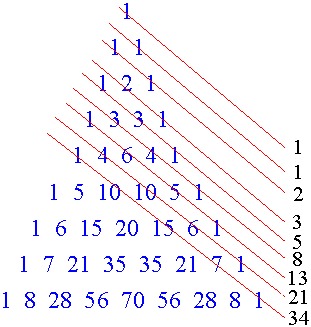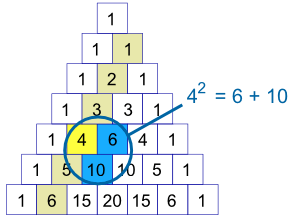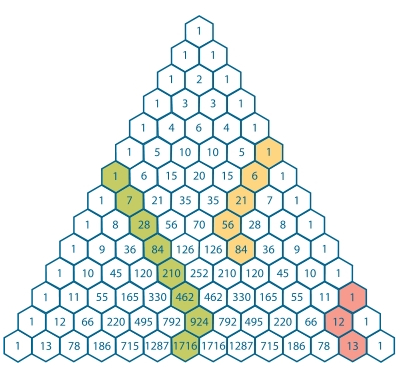The fibonacci sequence is a recursion sequence created by adding the two previous numbers to make the next number, which gives {1,1,2,3,5,8,13,21,...}.
This sequence can be found in Pascal's Triangle:

The fibonacci sequence is a recursion sequence created by adding the two previous numbers to make the next number, which gives {1,1,2,3,5,8,13,21,...}.
This sequence can be found in Pascal's Triangle:

The square of the numbers in the second diagonal can be found by the addition of the number next to it and below it as such:

By selecting any diagonal and going down any amount of numbers, the sum of all those numbers is equal to the number below the last number in the diagonal,
making a hockey stick shape.

Use the following applet to learn how Pascal's Triangle can be used to approximate e. Sn denotes the product of the nth row, where the top
row denotes S0. Sn-1denotes the product of the row above row n and Sn+1 denotes the product of the row beneath row n.
Lets consider the 3rd row. Sn is then S3=1*3*3*1=9, Sn-1 is 1*2*1=2 and Sn+1=1*4*6*4*1=96. You can find the product of each row by
typing in the multiplication of the terms in the nth row in the corresponding input bars. Thus, for S3, you would type in the Sn input
bar 1*3*3*1, by pressing enter it will then show the product is 9.
Start at Sn where n=1 and fill in the corresponding input bars to find what the ratio approaches as you move down Pascal's Triangle.